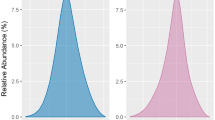Abstract
Background and Objective
Batroxobin, a snake venom thrombin-like enzyme, converts fibrinogen into fibrin by cleaving fibrinopeptide A. It is used for hemostasis; however, the supply of native batroxobin is limited. Therefore, we developed a recombinant batroxobin (r-batroxobin) from Pichia pastoris and evaluated its pharmacodynamics and safety in humans.
Methods
A randomized, double-blind, placebo-controlled, single ascending-dose study was performed. Eight healthy subjects were enrolled in each r-batroxobin dose group (2.5, 5.0, or 10.0 BU/2.0 mL administered intravenously), and randomized to receive r-batroxobin (n = 6) or matching placebo (n = 2). Safety was evaluated during the study, and pharmacodynamics was assessed using prothrombin time (PT), activated partial thromboplastin time (aPTT), thrombin time (TT), and fibrinogen level.
Results
All subjects in each cohort completed the study. No significant changes in PT or aPTT occurred after intravenous r-batroxobin administration. Compared with the placebo group, the fibrinogen level in all r-batroxobin dose groups decreased significantly to 8.68–33.57% from the baseline within 12 h (p ≤ 0.05). The TT in the 5.0 and 10.0 BU/2.0 mL groups significantly increased to 7.53–18.48% from baseline within 12 h compared with that of the placebo group (p ≤ 0.05), whereas that of the 2.5 BU/2.0 mL group exhibited non-significant changes compared with the placebo group. No serious adverse events occurred.
Conclusions
A single intravenous injection of r-batroxobin within a dose range of 2.5–10.0 BU/2.0 mL was well tolerated and resulted in a significant decrease in fibrinogen and prolongation of TT.
Registration
This study is registered at the Clinical Research Information Service (CRIS, http://cris.nih.go.kr), number KCT0002518.



Similar content being viewed by others
References
Kauvar DS, Wade CE. The epidemiology and modern management of traumatic hemorrhage: US and international perspectives. Crit Care. 2005;9(Suppl 5):S1–9.
Rossaint R, Bouillon B, Cerny V, Coats TJ, Duranteau J, Fernandez-Mondejar E, et al. The European guideline on management of major bleeding and coagulopathy following trauma: fourth edition. Crit Care. 2016;20:100.
Davenport R, Khan S. Management of major trauma haemorrhage: treatment priorities and controversies. Br J Haematol. 2011;155(5):537–48.
Douketis JD, Berger PB, Dunn AS, Jaffer AK, Spyropoulos AC, Becker RC, et al. The perioperative management of antithrombotic therapy: American College of Chest Physicians Evidence-Based Clinical Practice Guidelines (8th Edition). Chest. 2008;133(6 Suppl):299S–339S.
Seghatchian J, Samama MM. Massive transfusion: an overview of the main characteristics and potential risks associated with substances used for correction of a coagulopathy. Transf Apher Sci. 2012;47(2):235–43.
Sihler KC, Napolitano LM. Complications of massive transfusion. Chest. 2010;137(1):209–20.
Schulman S. Pharmacologic tools to reduce bleeding in surgery. Hematol Am Soc Hematol Educ Program. 2012;2012:517–21.
Kumar VA, Wickremasinghe NC, Shi S, Hartgerink JD. Nanofibrous snake venom hemostat. ACS Biomater Sci Eng. 2015;1(12):1300–5.
Seon GM, Lee MH, Kwon BJ, Kim MS, Koo MA, Kim D, et al. Functional improvement of hemostatic dressing by addition of recombinant batroxobin. Acta Biomater. 2017;48:175–85.
Hu H, Chen L, Frary CE, Chang C, Hui H, Zhang H, et al. The beneficial effect of Batroxobin on blood loss reduction in spinal fusion surgery: a prospective, randomized, double-blind, placebo-controlled study. Arch Orthop Trauma Surg. 2015;135(4):491–7.
Aronson DL. Comparison of the actions of thrombin and the thrombin-like venom enzymes ancrod and batroxobin. Thromb Haemost. 1976;36(1):9–13.
You W, Choi W, Koh Y, Shin H, Jang Y, Chung K. Functional characterization of recombinant batroxobin, a snake venom thrombin-like enzyme, expressed from Pichia pastoris. FEBS Lett. 2004;571(1–3):67–73.
Lochnit G, Geyer R. Carbohydrate structure analysis of batroxobin, a thrombin-like serine protease from Bothrops moojeni venom. Eur J Biochem. 1995;228(3):805–16.
Jayandharan G, Nair S, Poonnoose P, Thomas R, John J, Keshav S, et al. Polymorphism in factor VII gene modifies phenotype of severe haemophilia. Haemophilia. 2009;15(6):1228–36.
Key NS, Makris M, Lillicrap D. Practical hemostasis and thrombosis. 3rd ed. Chichester, West Sussex: Wiley; 2017.
Hughes-Jones NC, Wickramasinghe SN, Hatton C. Lecture notes haematology. Chichester: Wiley; 2008.
Tanaka KA, Key NS, Levy JH. Blood coagulation: hemostasis and thrombin regulation. Anesth Analg. 2009;108(5):1433–46.
Xu C, Wu A, Yue Y. Which is more effective in adolescent idiopathic scoliosis surgery: batroxobin, tranexamic acid or a combination? Arch Orthop Trauma Surg. 2012;132(1):25–31.
Liu KA, Dipietro Mager NA. Women’s involvement in clinical trials: historical perspective and future implications. Pharm Pract (Granada). 2016;14(1):1–9.
Acknowledgements
We would like to thank the staff at Severance Hospital Clinical Trials Center for their generous cooperation. This randomized clinical trial is registered at the Clinical Research Information Service (CRIS, http://cris.nih.go.kr), number KCT0002518.
Author information
Authors and Affiliations
Contributions
Conceptualization: MSP and COK. Conduct of clinical study: COK, MSP, JTK, and YS. Data curation: SKC. Formal analysis: SKC, CWK, and COK; Writing-original manuscript: SKC and COK.
Corresponding author
Ethics declarations
Funding
This study was funded by NC bit Inc., Seongnam, Korea.
Conflict of interest
Jong-Tak Kim and Young Seomun are full-time employees of NC bit Inc, but they did not play a major role in the study design or data analysis. The other authors report no conflicts of interest related to this work.
Ethical approval
Institutional Review Board (IRB) of Severance Hospital, Yonsei University College of Medicine (Seoul, Korea) approved the study protocol before the study was conducted (IRB number: 4-2014-0661). All procedures performed in this study involving human participants were in accordance with the ethical standards of the institutional and/or national research committee and with the 1964 Helsinki declaration and its later amendments or comparable ethical standards.
Informed consent
Informed consent was obtained from all individual participants included in the study.
Rights and permissions
About this article
Cite this article
Choi, S.K., Kim, C.W., Kim, JT. et al. Coagulant Effect and Tolerability of Yeast-Produced Recombinant Batroxobin in Healthy Adult Subjects. Clin Drug Investig 38, 829–835 (2018). https://doi.org/10.1007/s40261-018-0673-x
Published:
Issue Date:
DOI: https://doi.org/10.1007/s40261-018-0673-x




